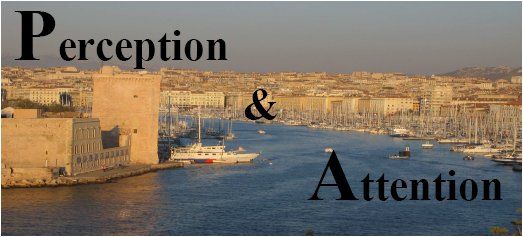
The perception of natural visual scenes and the recognition of familiar forms (letters, words, objects and handwriting).
Thématiques
Perception and Attention Team
Leaders:
E. Castet (DR2)
F. Vitu-Thibault (DR2)
Permanents
P. Courrieu (CR1), Y. Marzouki (MC), T. Ripoll (PR), Manuel Vidal (CR)
Post-Doctoral Students
J.-B. Bernard, M. Declerck, C. Albrengues
Our research focuses on the study of perceptual, attentional and oculomotor processes used in daily reading of texts, the perception of natural visual scenes and the recognition of familiar forms (letters, words, objects and handwriting). They focus on (1) the mechanisms involved in the programming of saccadic eye movements, (2) the orientation of visual attention in relation to saccades and contraction / dilatation of the pupil, (3) visual perception in the eyes (4) attention and short-term visual memory, (5) visual constraints affecting the perception of letters (eg, crowding), (6) the nature and role of orthographic processing in word recognition, (7) the role of attention in the processing of adjacent words, (8) modeling the recognition of forms, letters and words, 9) the study and modeling of eye movements during reading, with particular emphasis on oculomotor mechanisms and visual treatments, as well as their interactions with language processes, (10) oculomotor control , Visual perception and reading with a central scotoma, (11) the influence of visual salience and the processes associated with the recognition of objects on eye guidance in the exploration of natural visual scenes.
The methodologies and techniques used are borrowed from experimental psychology, psychophysics and behavioral and computational neuroscience. They include measurement of detection and discrimination thresholds, reaction times and perceptual identification performance, recording of evoked potentials and eye movements, functional imaging and modeling. Some of our studies are performed on a population of visually impaired patients, mostly those with age-related macular degeneration (AMD).
Main themes
- Active vision: Interaction between visual treatments, attention and eye movements
- reading text
- recognition of words
- exploration of visual scenes
- psychophysics of low vision
- pupillometry


